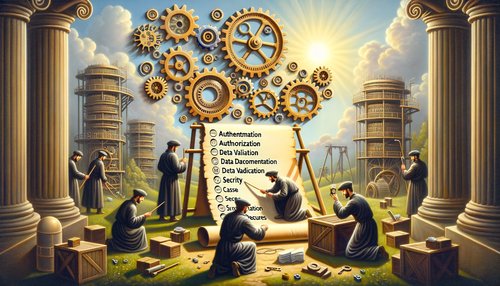Unlock the Power of Django Rest Framework Serializers in Your App
If you’re a web developer looking to create a powerful, scalable web application, you may want to consider using Django Rest Framework (DRF) Serializers. DRF Serializers provide a convenient way to serialize and deserialize data from and to your application. They are a powerful tool that can help you with a variety of tasks, from simple data validation to complex data transformations.
In this blog post, we’ll discuss what serializers are, how to use them in your app, and how to take advantage of the powerful features they provide.
What Are Serializers?
A serializer is a class that is used to convert a set of data into a format that can be easily read and written. It acts as a bridge between the data and the application. Serializers are often used to convert data from a database into a format that can be used by the application, or to convert data from the application into a format that can be stored in a database.
DRF Serializers provide a convenient way to serialize and deserialize data from and to your application. They are a powerful tool that can help you with a variety of tasks, from simple data validation to complex data transformations.
How to Use Serializers in Your App
Using DRF Serializers in your app is relatively straightforward. First, you need to create a serializer class. This class should inherit from the rest_framework.serializers.ModelSerializer class, and should contain the fields you want to serialize. For example:
class MySerializer(serializers.ModelSerializer):
id = serializers.IntegerField()
name = serializers.CharField()
age = serializers.IntegerField()
Once you have created your serializer class, you can use it in your views. For example, if you want to serialize a queryset of objects, you can do so with the following code:
serializer = MySerializer(queryset, many=True)
data = serializer.data
And if you want to deserialize a set of data, you can do so with the following code:
serializer = MySerializer(data=data)
if serializer.is_valid():
data = serializer.validated_data
This is just a basic example of how to use DRF Serializers in your application. There are many more features and use cases that you can explore.
Unlock the Power of DRF Serializers
Once you’ve become comfortable with using DRF Serializers in your application, you can start to explore the more advanced features they provide. For example, you can customize the serialization process by writing custom fields and serializers. You can also use the built-in validation features to ensure that the data you are serializing is valid. Additionally, you can use the built-in serializer relationships to easily handle complex data transformations.
By taking advantage of the powerful features provided by DRF Serializers, you can create powerful, scalable web applications with ease. So if you’re looking to create a powerful web application, you should definitely consider using DRF Serializers.
Recent Posts

Unlocking the Power of Terraform: Mastering Conditional Expressions for Smarter Infrastructure Automation

Unveiling the Future: Navigating the Public Interface of Apache Airflow for Streamlined Workflow Management
Apache Airflow
Mastering Workflow Automation: Unconventional Apache Airflow How-To Guides for the Modern Data Enthusiast
Apache Airflow
Mastering the Cloud: Unveiling AWS CloudFormation Best Practices for Seamless Infrastructure Management



